The animal kingdom provides so much diversity that it’s almost impossible to keep track of all the different species in the world. Sometimes the distinction between close relatives is too hard to even notice. But different species often evolve in similar ways because of their environment.
We at Bright Side gathered 16 pairs of animals who are almost indistinguishable from each other at first sight in order to show you the differences between them.
1. Jaguar vs leopard
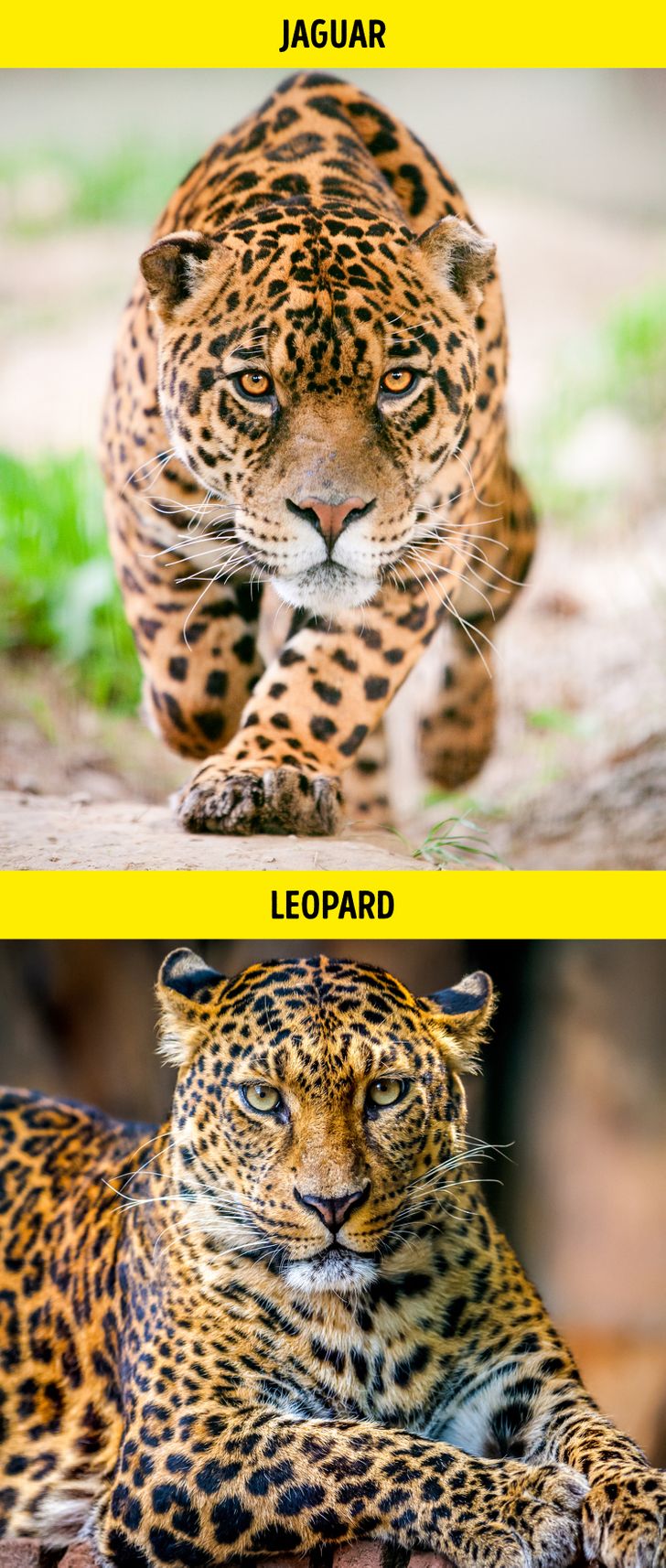
Despite their similarities, these big cats inhabit different continents and climate zones: leopards live in African savannas, while jaguars dwell in South American tropical forests. Jaguars are also larger and bulkier, and unlike leopards and many other cats, they’re fond of water.
2. Alligator vs crocodile
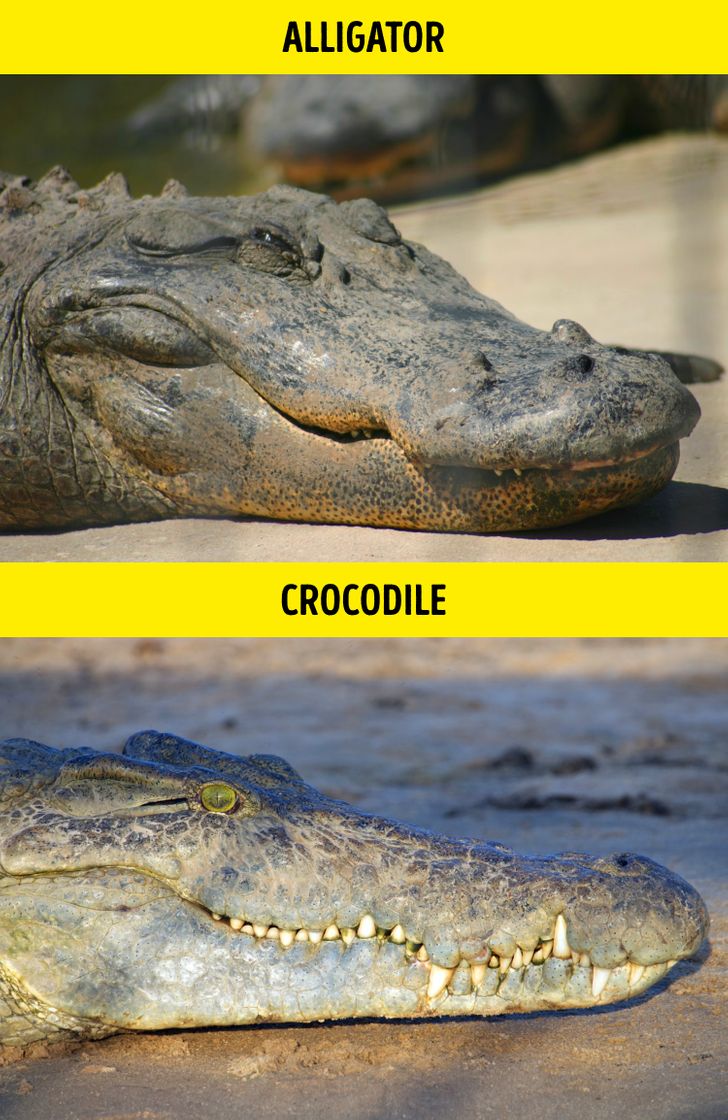
You can easily identify these 2 by the shape of their snouts: crocodiles have prominent, elongated V-shaped faces while alligators have shorter, wider U-shaped ones. Also, consider the teeth: crocodiles display their trademark toothy “grin” with every fourth tooth visible. Conversely, the alligator’s upper jaw is broader than the lower one, so its teeth aren’t visible for the most part.
3. Wasp vs hornet
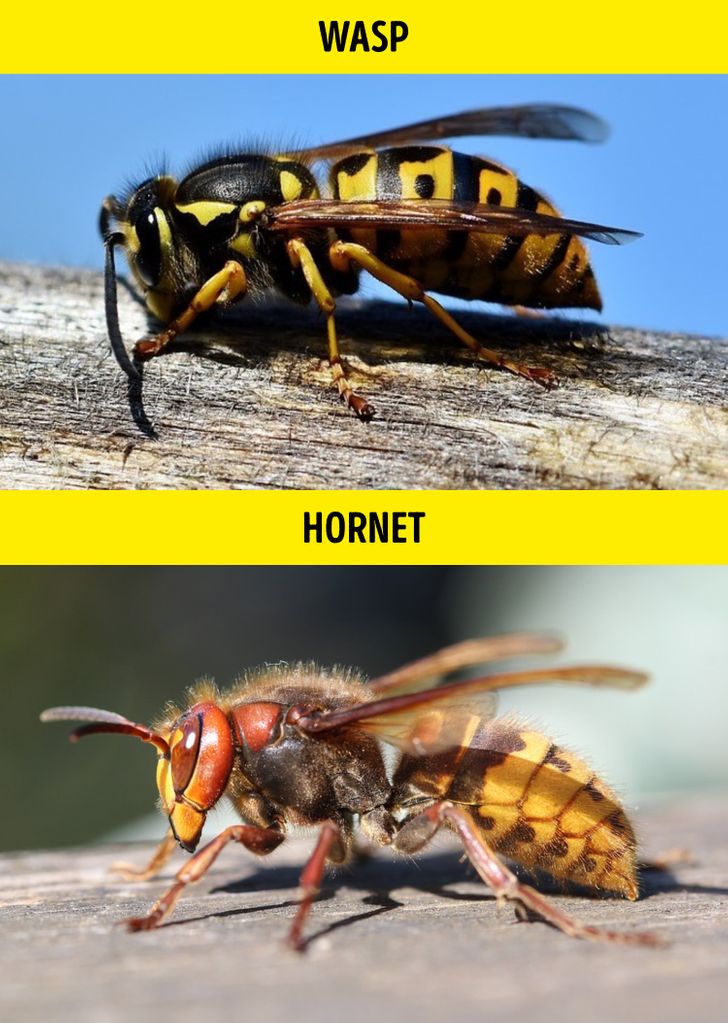
Both insects are menacing, that’s for sure. Hornets are larger and boast orange and black coloring, resembling spots rather than stripes, while wasps are more brightly colored and have yellow and black rings. You’re better off avoiding both.
4. Seal vs sea lion
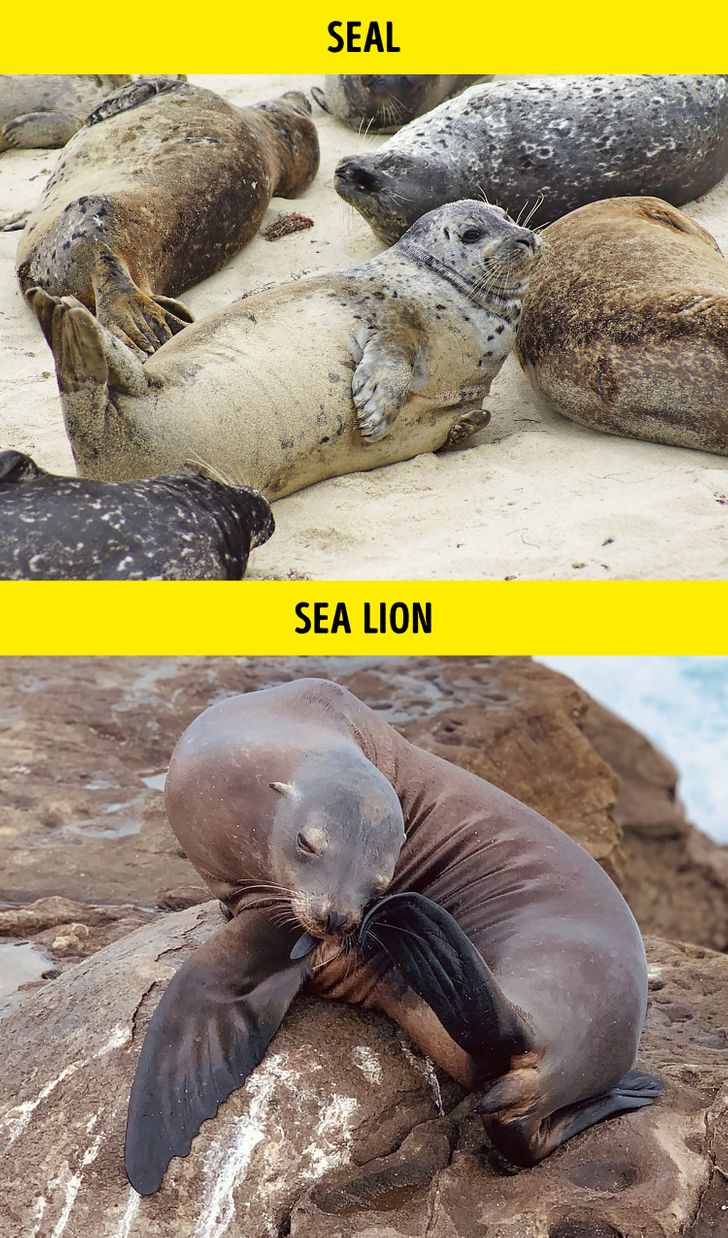
You’ve most likely met seals as cute plushy animals and sea lions as circus acrobats. Seals are covered with fur and have tiny front flippers which prevent them from walking, forcing them to wiggle on their bellies. Sea lions have smooth skin and vast flippers that they use to move on the ground.
5. Turtle vs tortoise

These 2 are both mobile (but very slow at that) and boast 4 legs. But the “turtle rock” is aquatic and has markings that resemble stains and circles on the water to better hide in the ponds. The “tortoise rock” is a land animal and spends most of its time on the ground — that is, as a literal rock.
6. Raven vs crow vs rook vs jackdaw
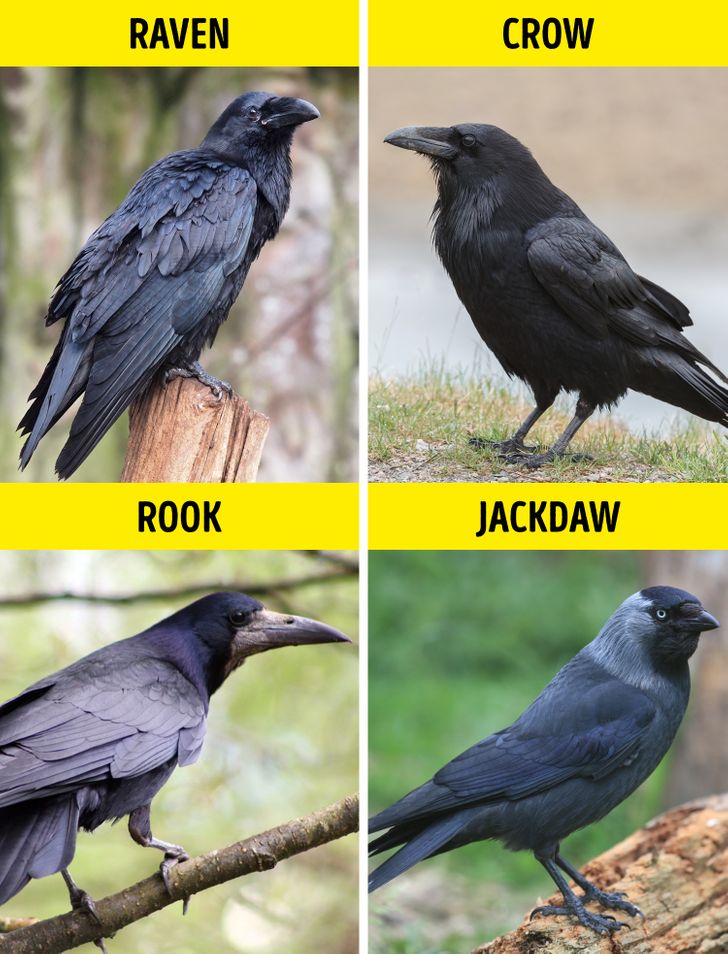
Most corvids look fairly similar (excluding jays who are like a theatre kid in a goth family). Ravens are the loftiest and most fashionable thanks to their “beard” of throat feathers. Crows and rooks are of the same size, but rooks have a distinct grey beak and fancy feather “pants” on their legs. Jackdaws are the goofiest-looking thanks to their very short beaks and a round heads with black caps.
7. Donkey vs mule
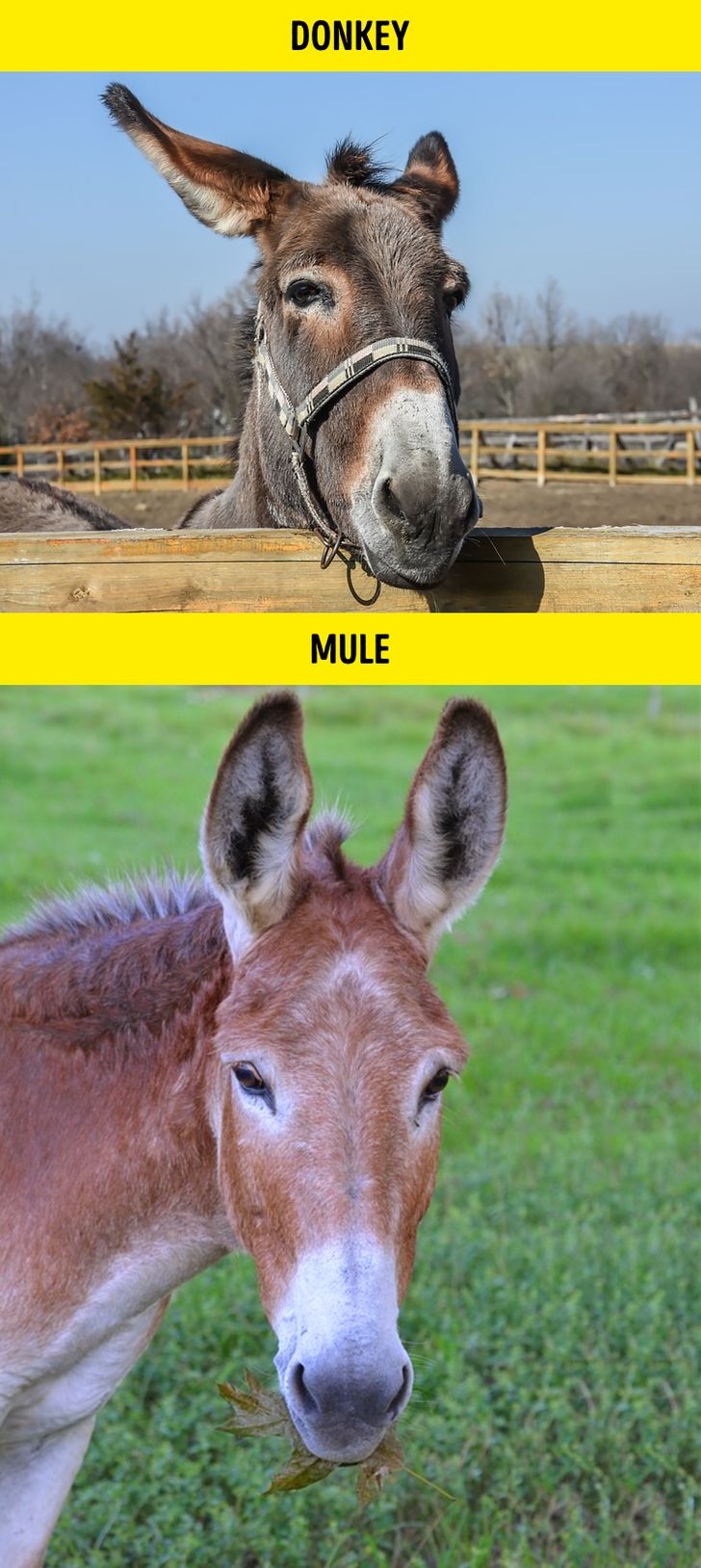
This one is tricky for a simple reason: while the donkey is its own species, a mule is a hybrid of donkey and horse. Funnily enough, it looks exactly like what you’d think these 2 animals would look like: an elegant head of a horse with ridiculously oversized donkey ears.
8. Hare vs rabbit
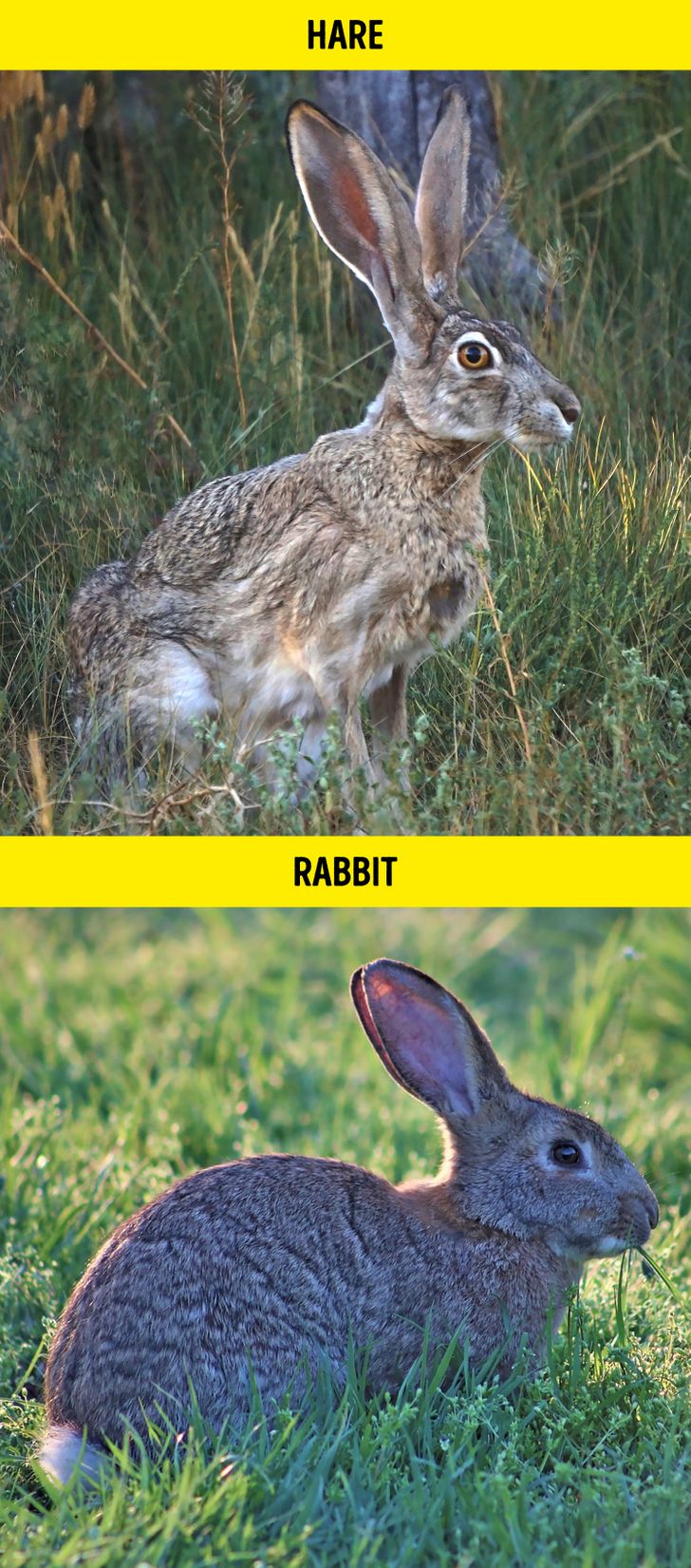
If you want a cuddly little pet, a rabbit is your best bet, but a hare definitely is not. Hares are larger and faster and have longer legs and ears. Rabbits are smaller, fluffier, and overall “cuter.” They even eat different food: rabbits prefer vegetables (like carrots) and soft grass while hares prefer bark and twigs. Rabbits are social animals while hares tend to be solitary. It’s no wonder rabbits are easily domesticated while hares mostly stay feral.
9. Moth vs butterfly
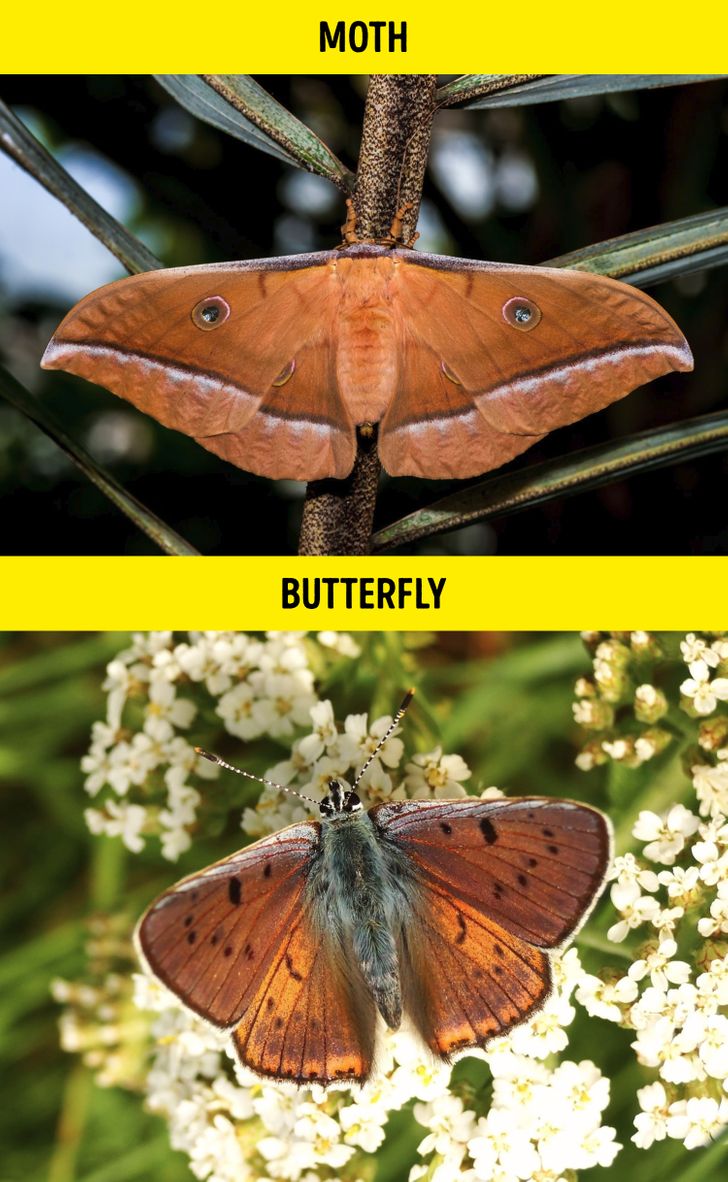
Moths have tent-like wings while butterflies flap their wings vertically. Moths usually rest with their wings open, while butterflies rest with their wings closed. Their antennas also differ: butterflies’ are long and thin and moths’ are short and feathery. Butterflies are strictly diurnal, while moths are mostly nocturnal.
10. Dolphin vs porpoise
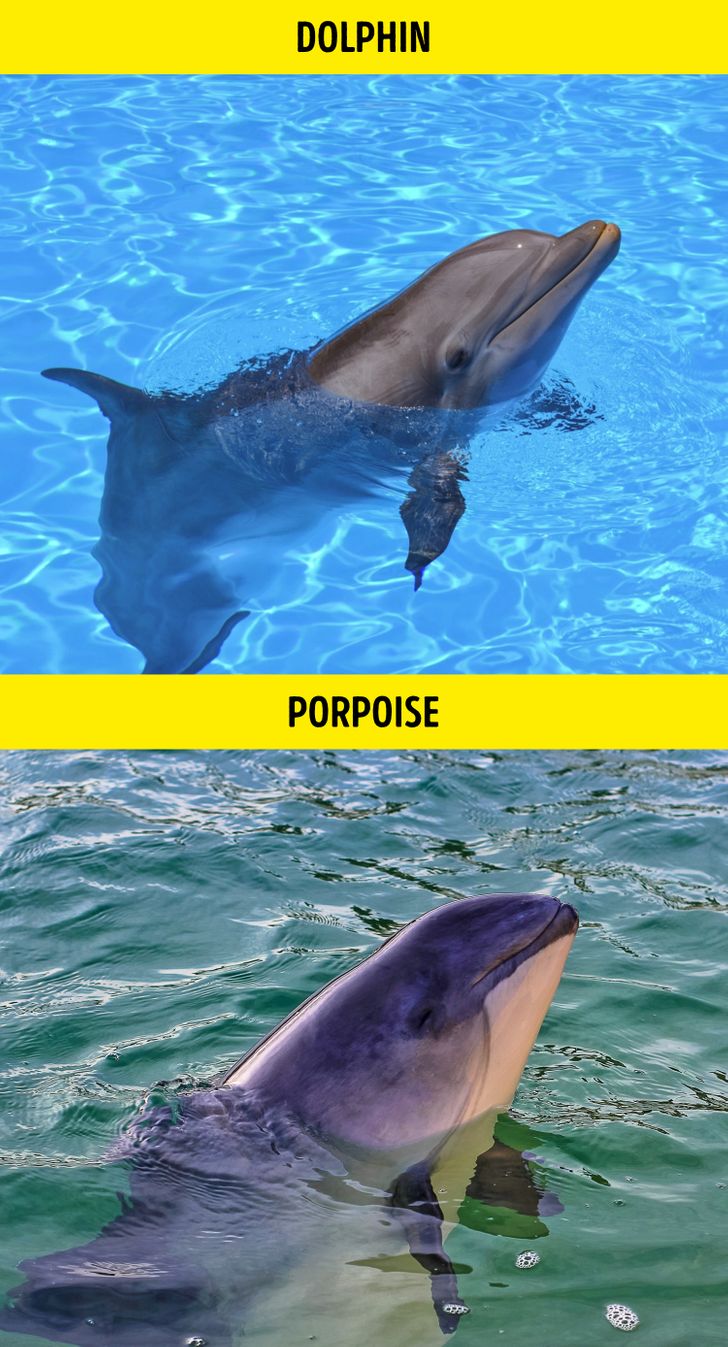
The difference between dolphins and porpoises comes down to their snouts, fins, and figures. Dolphins have long “beaks,” slender bodies, and curved dorsal fins. Porpoises have more flat, sloping faces, smaller flippers, and shorter triangular dorsal fins.
11. Weasel vs stoat
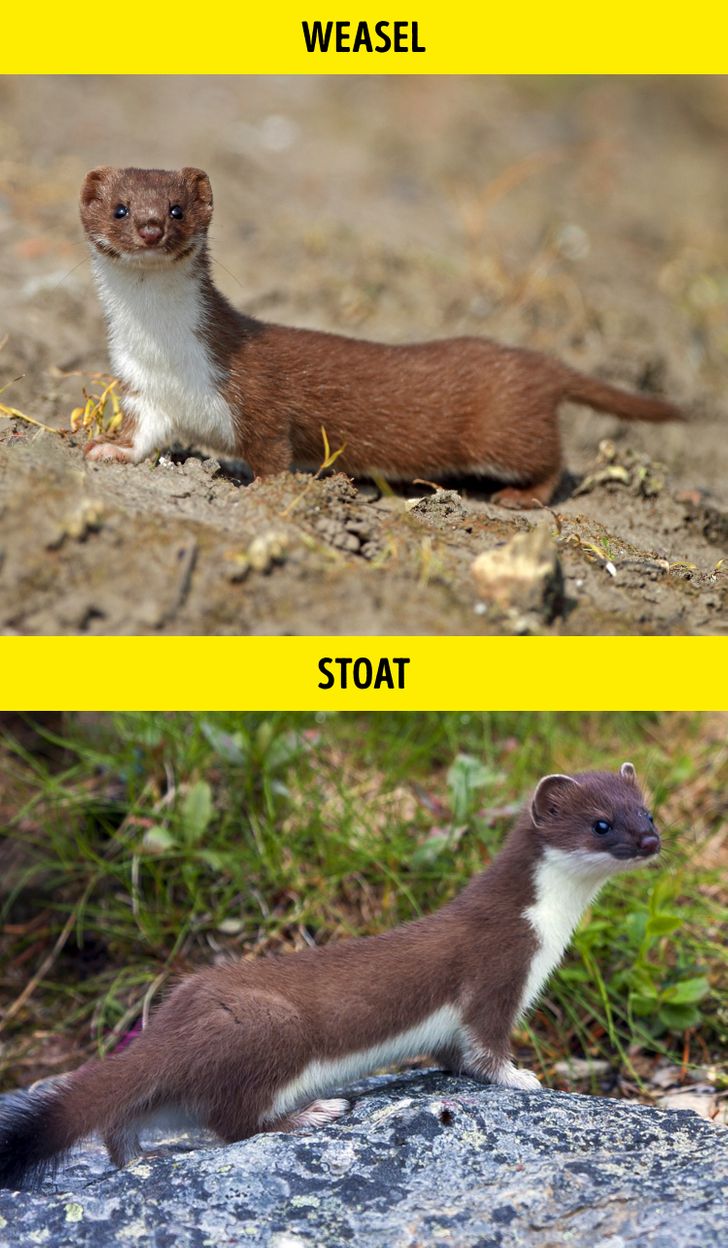
These 2 animals are close relatives. Stoats are bigger and have long tails with fuzzy black tips, while weasels’ tails are short and of the same color as the rest of the body. Stoats move in a bouncing gait with an arched back which looks hilarious, and weasels keep closer to the ground. Stoats also turn white in winter.
12. Eagle vs hawk vs falcon
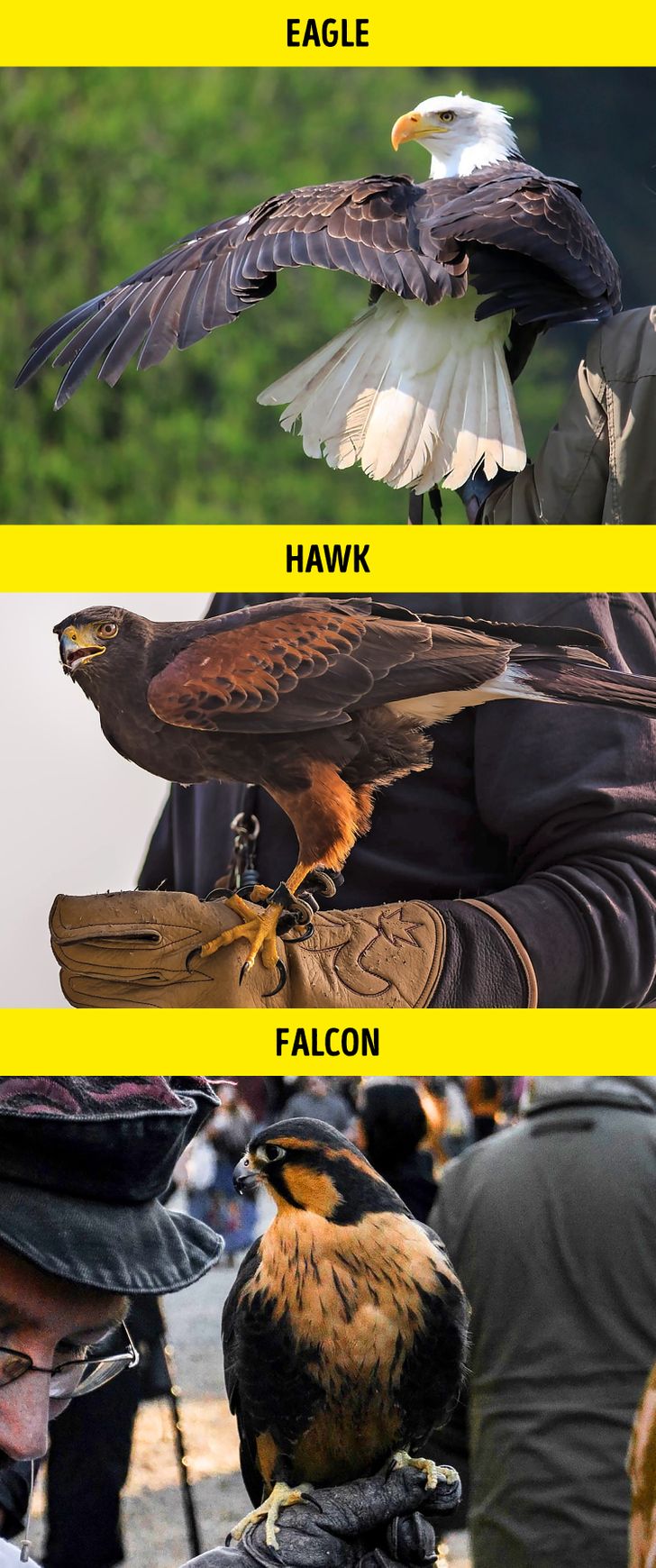
Eagles are gigantic, powerful birds who prefer to live in open spaces like cliffs and mountains. Hawks are a little smaller and more nimble in the air, capable of maneuvering in more closed areas. Falcons are the smallest and fastest of the 3 and differentiate the most visually: they have larger eyes and shorter beaks.
13. Mouse vs rat
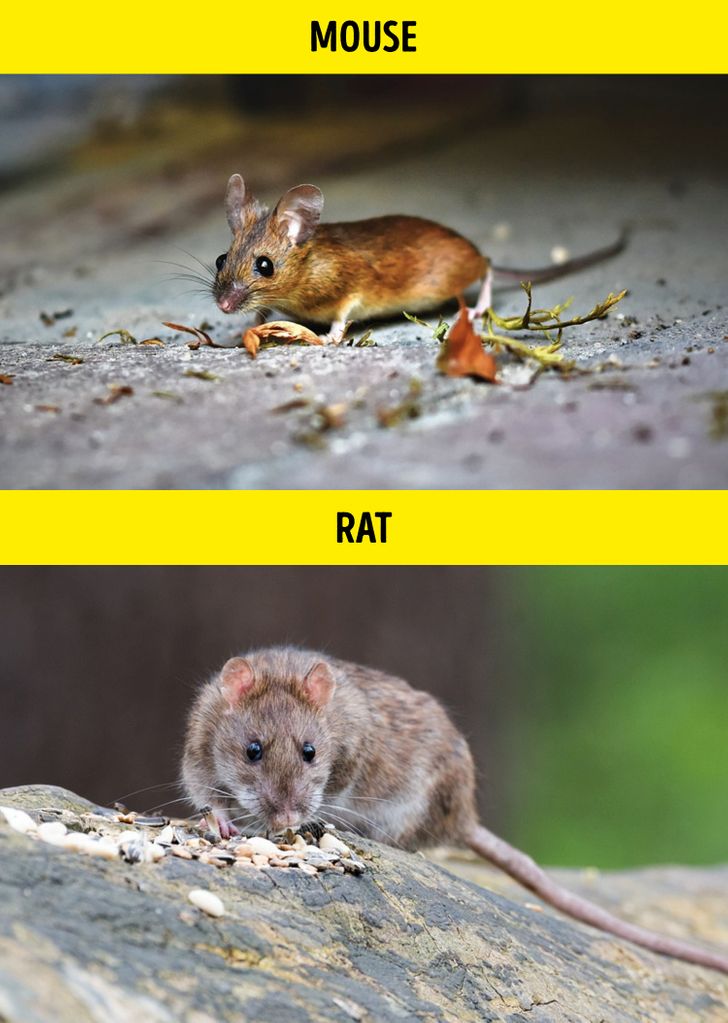
The 2 most famous (or infamous) rodents can be easily distinguished by 3 things: their size, tail, and ears. Mice are diminutive, even compared to young rats; they have thin long tails covered with fur while rats’ tails are thick and hairless. Mice have ears that are bigger in proportion to their bodies and are round and floppy with a tiny, triangular face. Rats’ faces are more prominent and blunt.
14. Seagull vs albatross
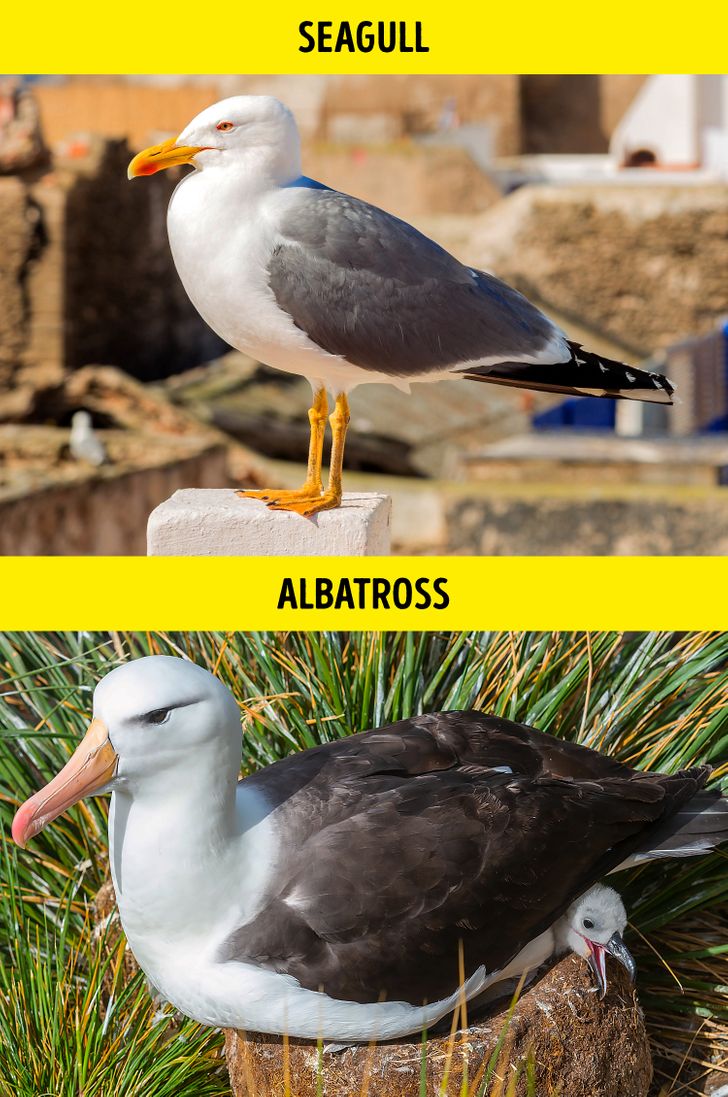
Gulls often live near water, be it the sea or ponds, and are rather acrobatic while diving and fish-catching, but aren’t fans of long voyages, unlike albatrosses. Albatrosses are portly birds who live in constant flight over the sea. They even have unique nostrils that allow them to remove salt from water and food.
15. Wolverine vs honey badger
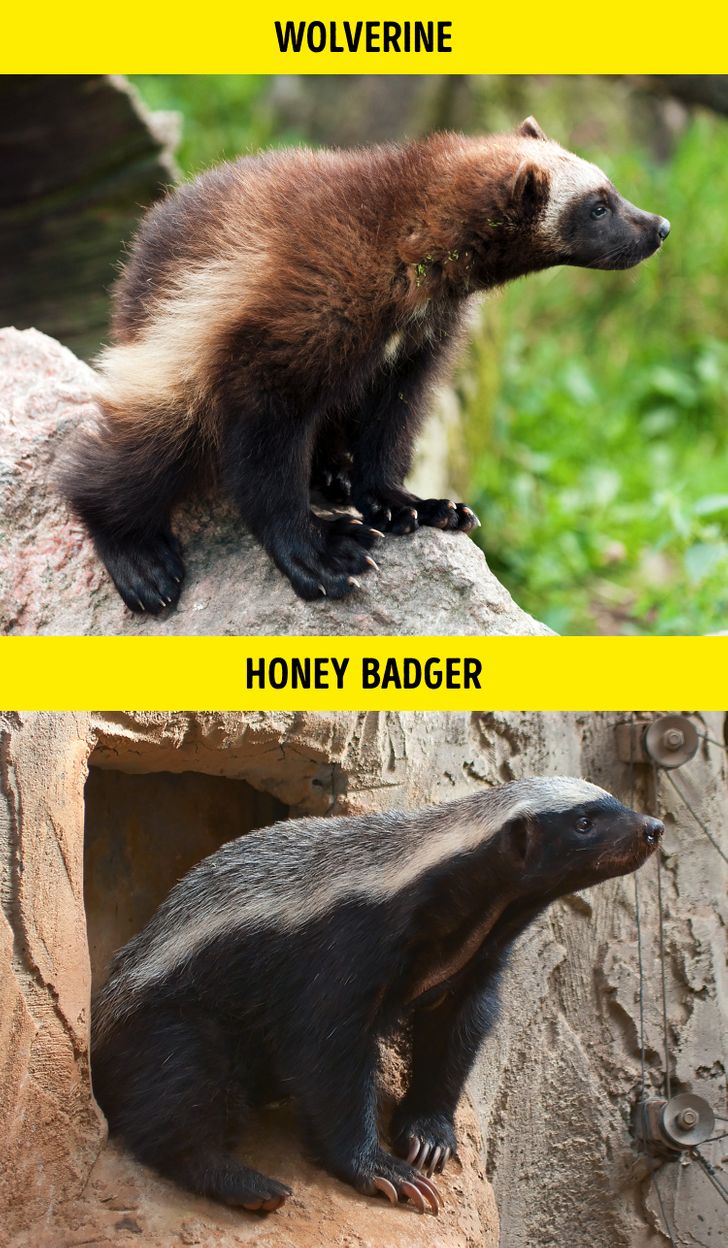
Despite living in different climate zones — the honey badger that lives in Africa and the wolverine that resides in the northern forests — both belong to the Mustelidae family. Wolverines are taller with longer legs and noticeable ears and have brown fur with yellow rings. Honey badgers keep closer to the ground and have black bodies with a white “cape” on their backs.
16. Wolf vs coyote vs jackal
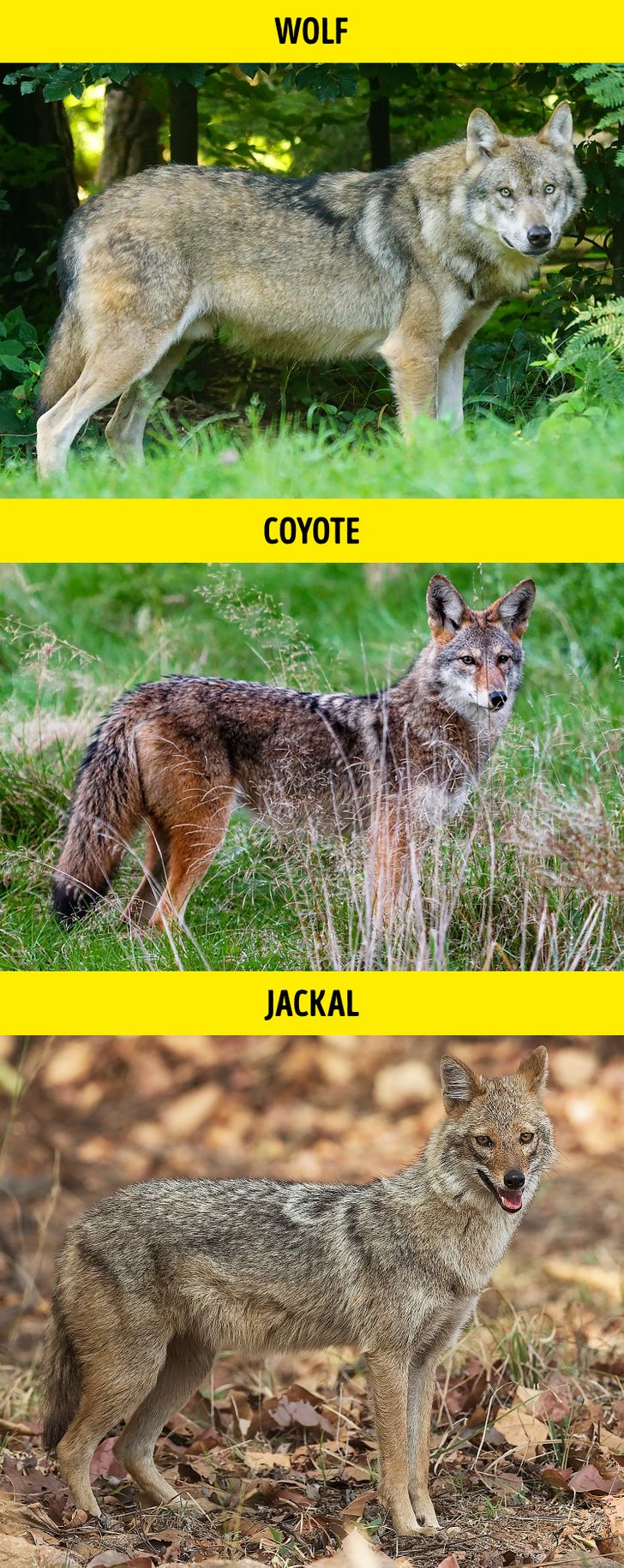
These 3 are “good boys and girls” that parade all over the globe. Jackals live in Africa, Asia, and India; coyotes live in Northern America; and wolves live all over the place. Wolves are large, sturdy animals, while coyotes and jackals possess a more lean and fragile frame.
Coyotes are recognizable for the red fur on their faces and ears while jackals have a more yellow-colored coat. Additionally, jackals are noticeably less fluffy because they don’t have to endure the harshness of winter.
Funny bonus: Wolverine vs the honey badger
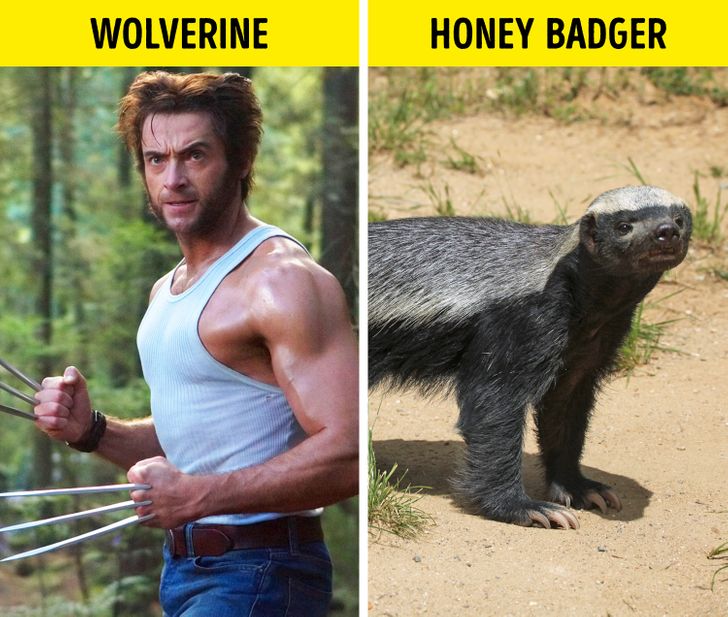
What kinds of animals have ever confused you? If you know more examples, share them in the comments!
Preview photo credit shutterstock.com, shutterstock.com
A escola me chamou para discutir o comportamento do meu filho, mas o zelador me chamou de lado e sussurrou: ‘Eles estão mentindo para você’ – História do dia

Cheguei à nova escola do meu filho ansiosa, mas esperançosa, apenas para me deparar com as palavras perturbadoras da professora: “Jacob teve alguns desafios”. No entanto, algo no silêncio triste do meu filho sugeria um problema mais profundo — um problema que eu ainda não conseguia enxergar por trás das portas fechadas da escola.
O sol estava quente, mas eu sentia frio. Ao sair do carro e entrar na calçada da escola, minhas mãos tremiam um pouco.
O ar cheirava a grama recém-cortada e a novos começos, mas meus pensamentos estavam longe de ser leves.
Avistei Jacob parado perto da porta da frente da escola, ombros curvados, mochila pendurada no chão, e seu professor ao lado dele.
A Sra. Emily era jovem, talvez tivesse uns 30 anos, usava uma blusa azul impecável e uma prancheta debaixo do braço.
Ela sorriu daquele jeito que os professores às vezes fazem: firme, experiente, educado.

Apenas para fins ilustrativos. | Fonte: Midjourney
Jacob me viu e começou a andar lentamente, com os olhos fixos no chão.
Levantei a mão e acenei de leve, na esperança de animá-lo. Ele não acenou de volta.
Ele parecia tão pequeno comparado ao prédio da escola atrás dele. Quando chegou ao carro, a Sra. Emily se abaixou com um grande sorriso estampado no rosto.
“Jacob, como foi seu primeiro dia na nova escola?” ela perguntou num tom doce, doce demais.
Jacó nem levantou a cabeça.
“Bem, eu acho”, ele murmurou, então abriu a porta do carro e entrou, fechando-a suavemente atrás de si. Sem contato visual. Nem mesmo um olhar.

Apenas para fins ilustrativos. | Fonte: Midjourney
A Sra. Emily voltou sua atenção para mim. “Sra. Bennett, você poderia me dar uma palavrinha?”
Meu estômago se contraiu. “Claro”, respondi, afastando-me do carro com ela.
Ela me levou alguns metros para longe do estacionamento, seus saltos batendo suavemente contra o asfalto. Então ela parou e me olhou diretamente nos olhos.
“Jacob teve… alguns desafios hoje.”
Endireitei as costas.
É só o primeiro dia dele. Ele só precisa de tempo. Nos mudamos para cá na semana passada. É tudo novo — o quarto dele, os colegas, tudo. E somos só eu e ele. É muita coisa para um garotinho.
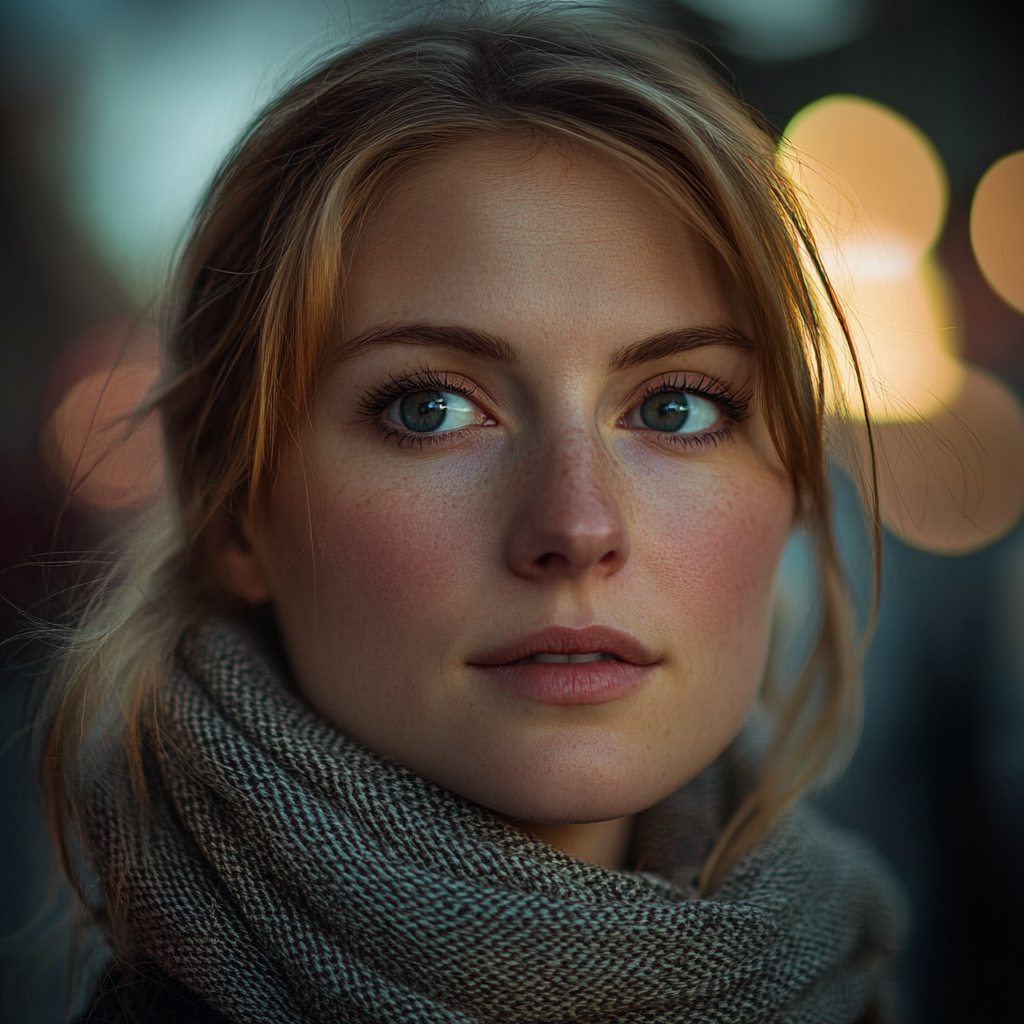
Apenas para fins ilustrativos. | Fonte: Midjourney
Ela assentiu, embora seus olhos não tenham suavizado.
“Claro. Mas… ele teve dificuldades com o conteúdo da aula e teve alguns conflitos com outras crianças.”
Franzi a testa. “Conflitos?”
“Discussões, principalmente. Um aluno reclamou que ele se recusou a compartilhar. Outro disse que ele empurrou durante o recreio.”
“Ele não é assim”, eu disse rapidamente. “Ele é tímido, não agressivo. Nunca teve problemas antes.”
“Tenho certeza de que ele é um menino gentil”, ela disse, mantendo a voz calma.

Apenas para fins ilustrativos. | Fonte: Midjourney
“Mas precisamos ser honestos: ele pode não ser uma boa opção para esta escola.”
Minha garganta apertou. “Por favor”, eu disse baixinho, “ele só precisa de um pouco de paciência. Ele vai se recompor. Ele sempre se recupera.”
Ela fez uma pausa, me observando por um longo segundo. Então, assentiu levemente.
“Veremos”, ela disse educadamente, já se virando.
Fiquei ali parado por alguns momentos depois que ela saiu, olhando para o prédio da escola.
As janelas estavam escuras, imóveis. Atrás delas, quem sabia o que realmente aconteceu? Meu filho estava sofrendo, e eu não sabia por quê.

Apenas para fins ilustrativos. | Fonte: Midjourney
Abri a porta do carro e entrei ao lado de Jacob. Ele olhou pela janela, em silêncio. Meu peito doía. Algo não estava certo — eu podia sentir.
Enquanto dirigíamos pela rua tranquila, com o sol da tarde projetando longas sombras no painel, olhei para Jacob pelo espelho retrovisor.
Seu pequeno rosto parecia pálido, seus olhos pesados e distantes.
“Como foi seu dia, sério?”, perguntei gentilmente, mantendo a voz calma.
Ele soltou um suspiro profundo, que soou velho demais para alguém de oito anos. “Foi assustador”, disse ele, com a voz quase sussurrando.
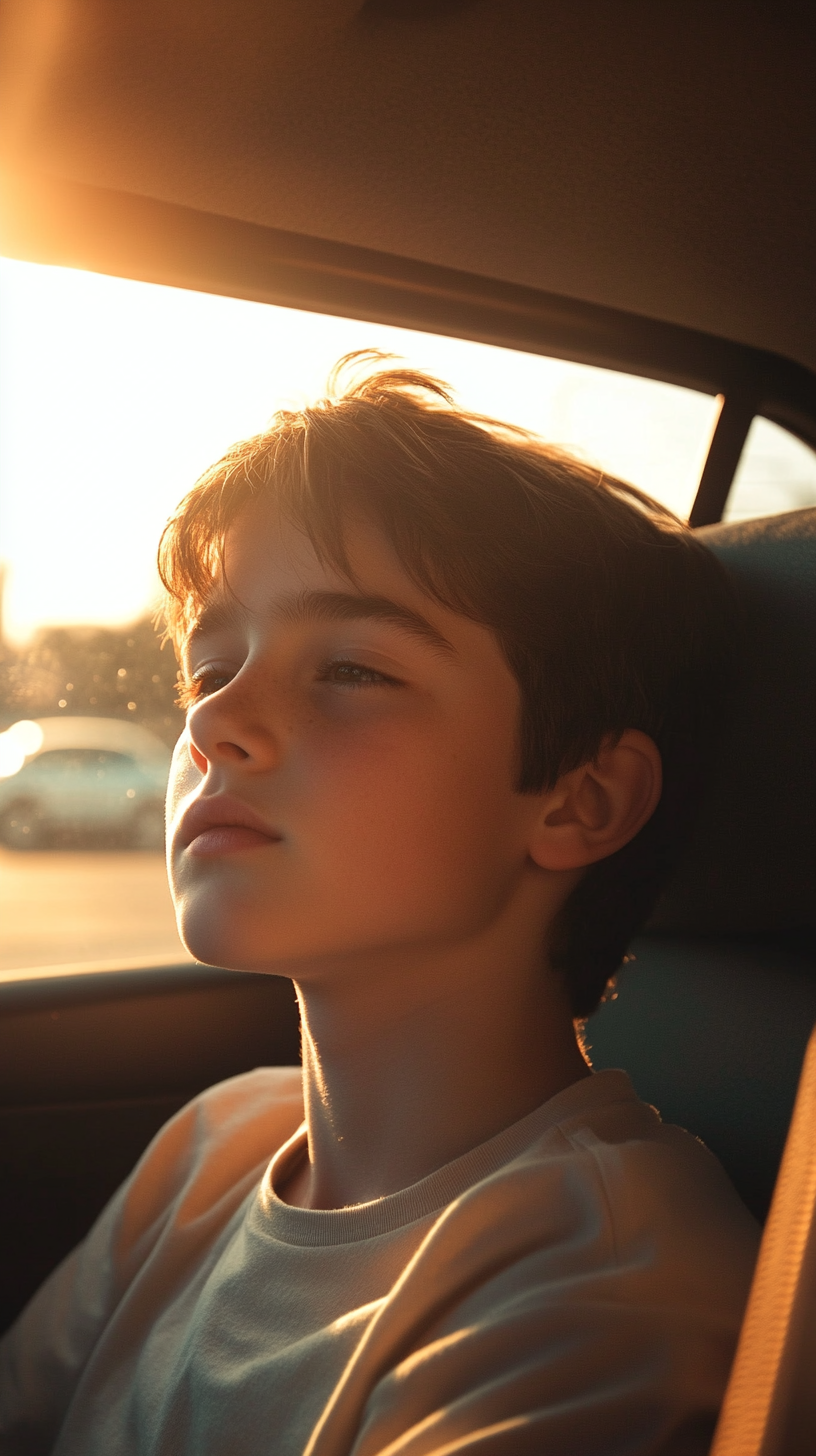
Apenas para fins ilustrativos. | Fonte: Midjourney
“Ninguém falou comigo, mãe.”
Meu peito apertou. “Ah, querida”, murmurei, “aconteceu alguma coisa? Você disse alguma coisa que os deixou chateados?”
Ele balançou a cabeça lentamente, ainda olhando pela janela. “Não. Eu não fiz nada. Eu só… eu só sinto falta dos meus velhos amigos. Não podemos voltar?”
A voz dele falhou um pouco na última palavra, e isso partiu meu coração.
Respirei fundo e pisquei para conter a ardência nos meus olhos.
“Quem me dera que pudéssemos, Jacob. Mas este novo emprego… é importante. Significa que posso cuidar melhor de nós.”

Apenas para fins ilustrativos. | Fonte: Midjourney
Ele não respondeu. Continuou apenas olhando para a estrada, seu reflexo fantasmagórico no vidro.
“Você pode me prometer que vai tentar de novo amanhã?”, perguntei baixinho. “Tente só mais uma vez.”
Ele deu um pequeno e relutante aceno, mas não falou nada.
Coloquei as duas mãos firmemente no volante. O silêncio entre nós era pesado. E ainda assim, em algum lugar lá dentro, eu não conseguia me livrar da sensação de que algo mais estava acontecendo.
Na manhã seguinte, acordei com um plano: manter tudo calmo, focado e normal. Deixei Jacob na escola com um sorriso gentil e um lembrete para ser corajosa.

Apenas para fins ilustrativos. | Fonte: Midjourney
Ele assentiu, segurando firme a lancheira, mas não disse nada. Meu coração apertou, mas eu tinha que confiar que o dia seria melhor.
Mais tarde, eu estava mostrando uma linda casa de dois andares para um casal de fora da cidade.
A cozinha brilhava de luz, o piso de madeira recém-polido. No momento em que eu descrevia o jardim dos fundos, meu telefone vibrou bruscamente no meu bolso.
Pedi licença rapidamente e saí para o corredor silencioso, atendendo apressadamente: “Alô?”
“Sra. Bennett”, disse a Sra. Emily com a voz tensa e cortante. “Tivemos um incidente grave envolvendo Jacob. Por favor, venha à escola imediatamente.”
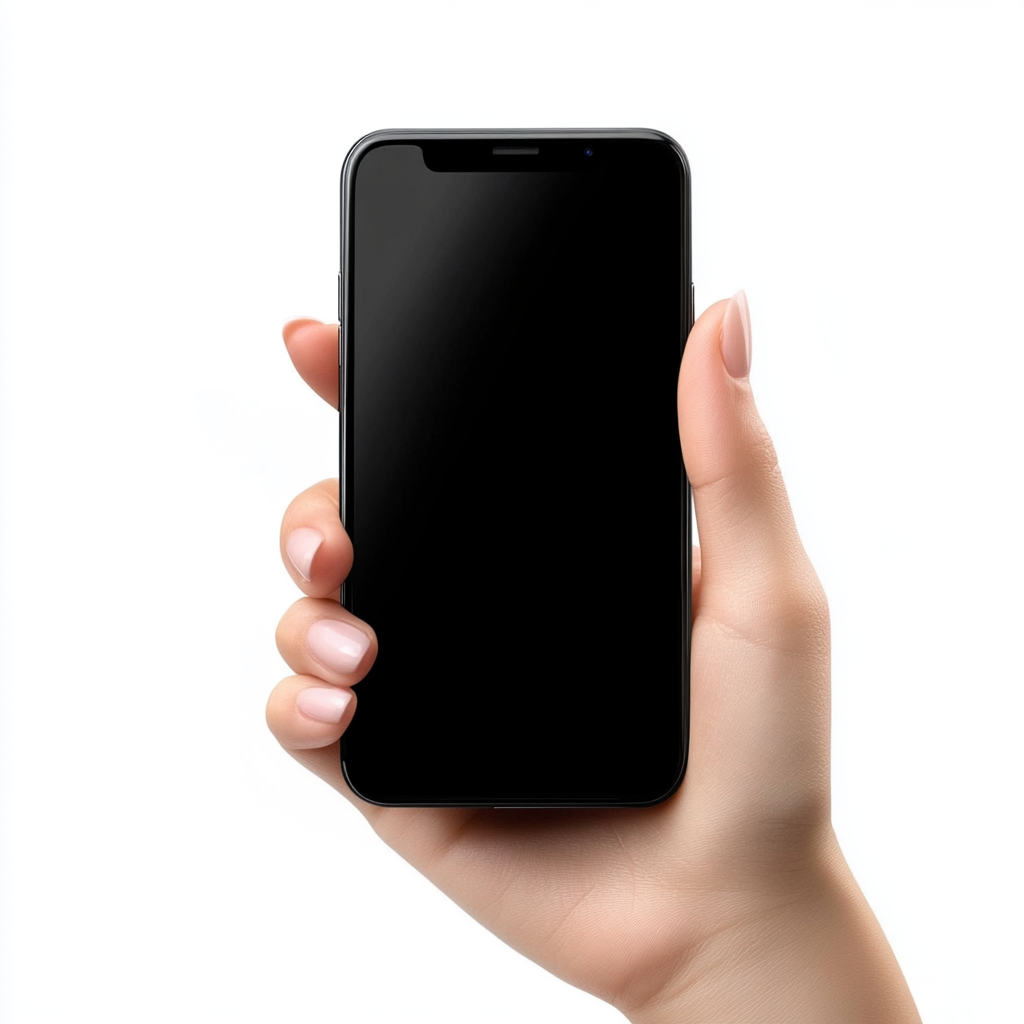
Apenas para fins ilustrativos. | Fonte: Midjourney
Meu estômago embrulhou. “O que aconteceu?”
“Eu explico quando você chegar aqui.”
Desliguei, mal conseguindo respirar. Com as mãos trêmulas, voltei para os meus clientes e pedi desculpas. Não expliquei o porquê — apenas que havia um imprevisto urgente.
Então peguei minhas chaves, corri até o carro e fui embora, com o pânico apertando meu peito durante todo o trajeto.
Quando entrei no estacionamento da escola, meus pneus fizeram barulho no cascalho.
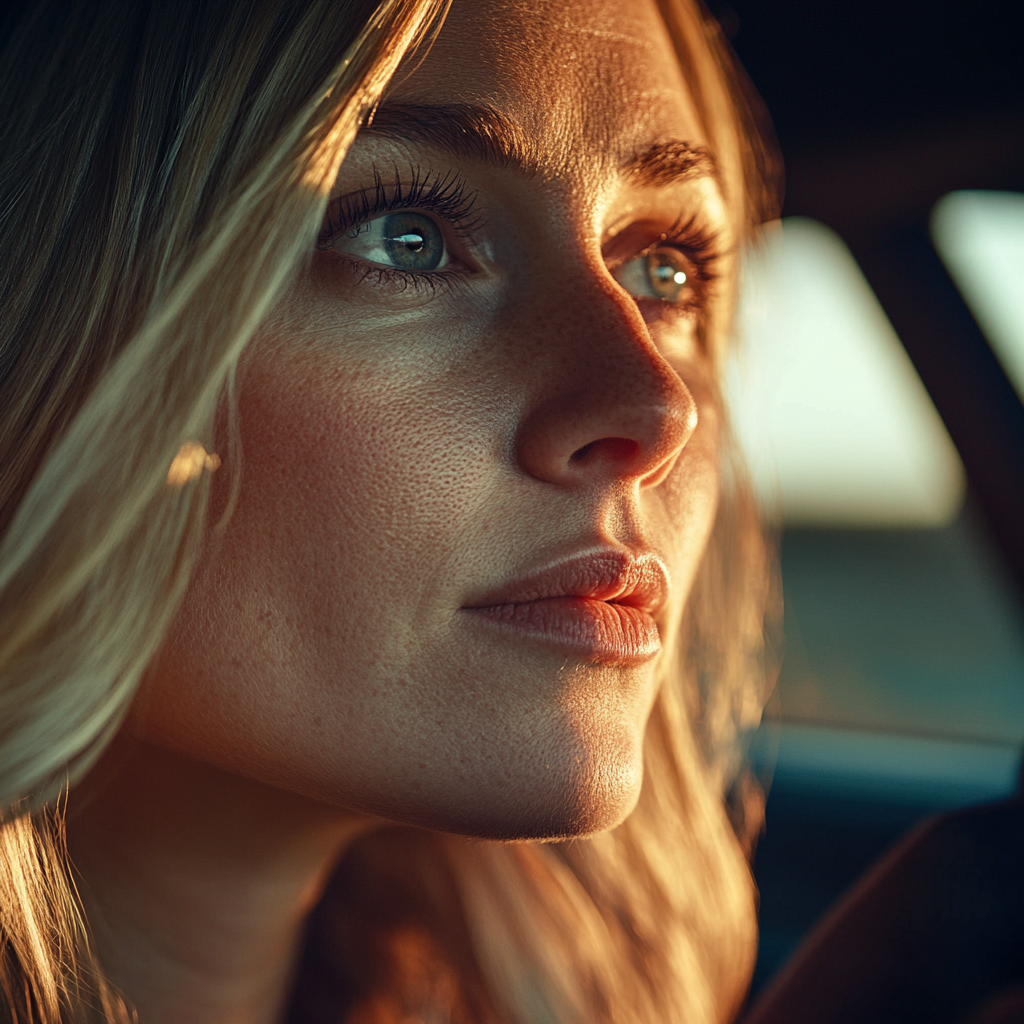
Apenas para fins ilustrativos. | Fonte: Midjourney
Pulei do carro e fui em direção à porta da frente, sem nem mesmo fechá-la atrás de mim. Foi então que ouvi alguém chamar meu nome baixinho.
“Susan?”
Eu me virei e congelei no lugar.
Era o Mark. O pai do Jacob. Meu ex-marido.
Ele ficou perto da cerca da escola, parecendo surpreso e um pouco sem graça.
“Mark”, eu disse, atordoada. “O que você está fazendo aqui?”
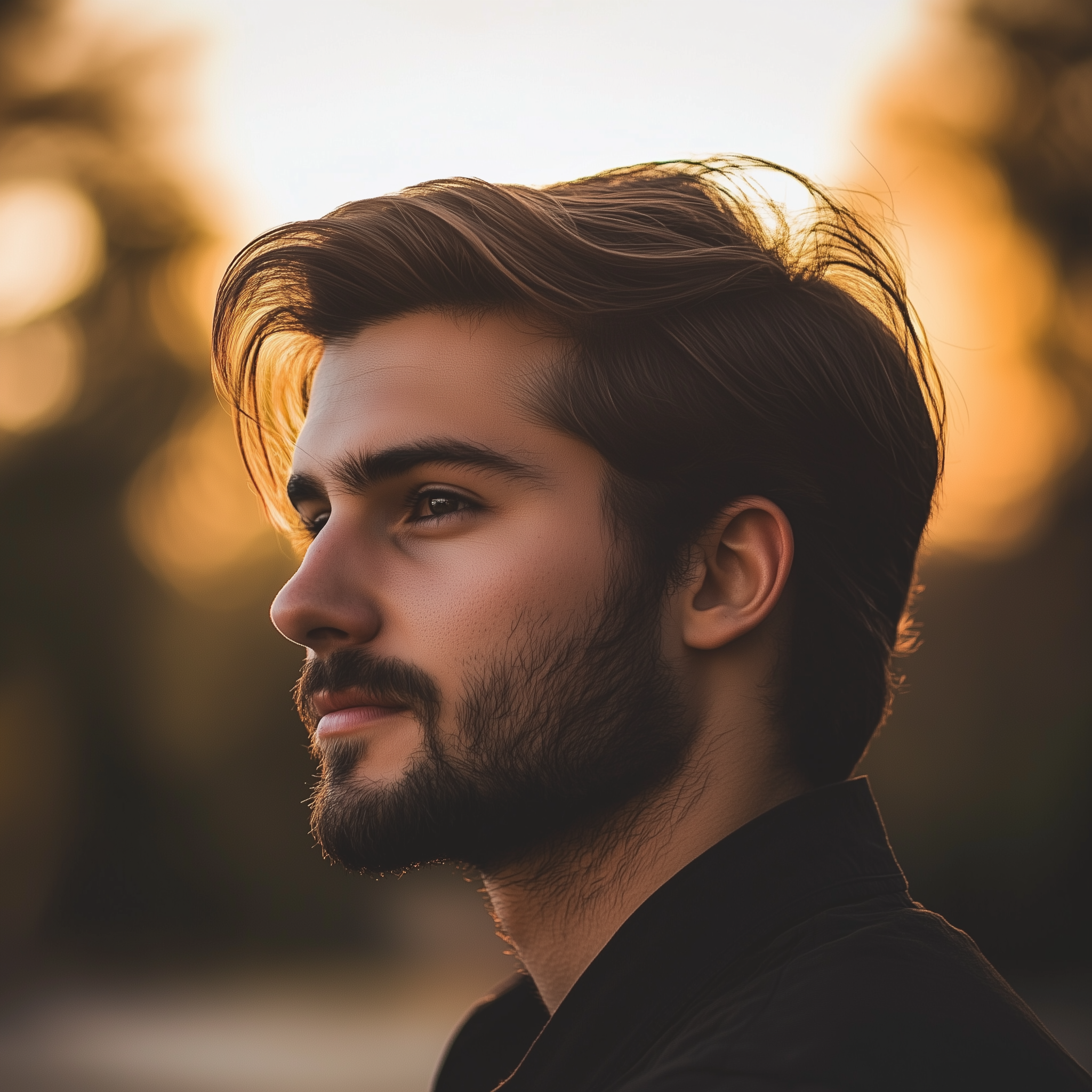
Apenas para fins ilustrativos. | Fonte: Midjourney
“Eu poderia te perguntar a mesma coisa”, respondeu ele, aproximando-se um passo. “Você se mudou para cá?”
Assenti lentamente. “Eu não queria te incomodar. E não achei que fosse grande coisa na época.”
Seu maxilar se apertou levemente. “Por que você não me contou? Eu mereço saber onde meu filho está.”
“Eu sei”, eu disse suavemente.
“Eu não queria que você aparecesse na escola do Jacob e adicionasse mais estresse à vida dele. Ele já teve problemas demais.”
Mark franziu a testa e desviou o olhar por um segundo. “Isso não é justo. Mas… eu entendo.”
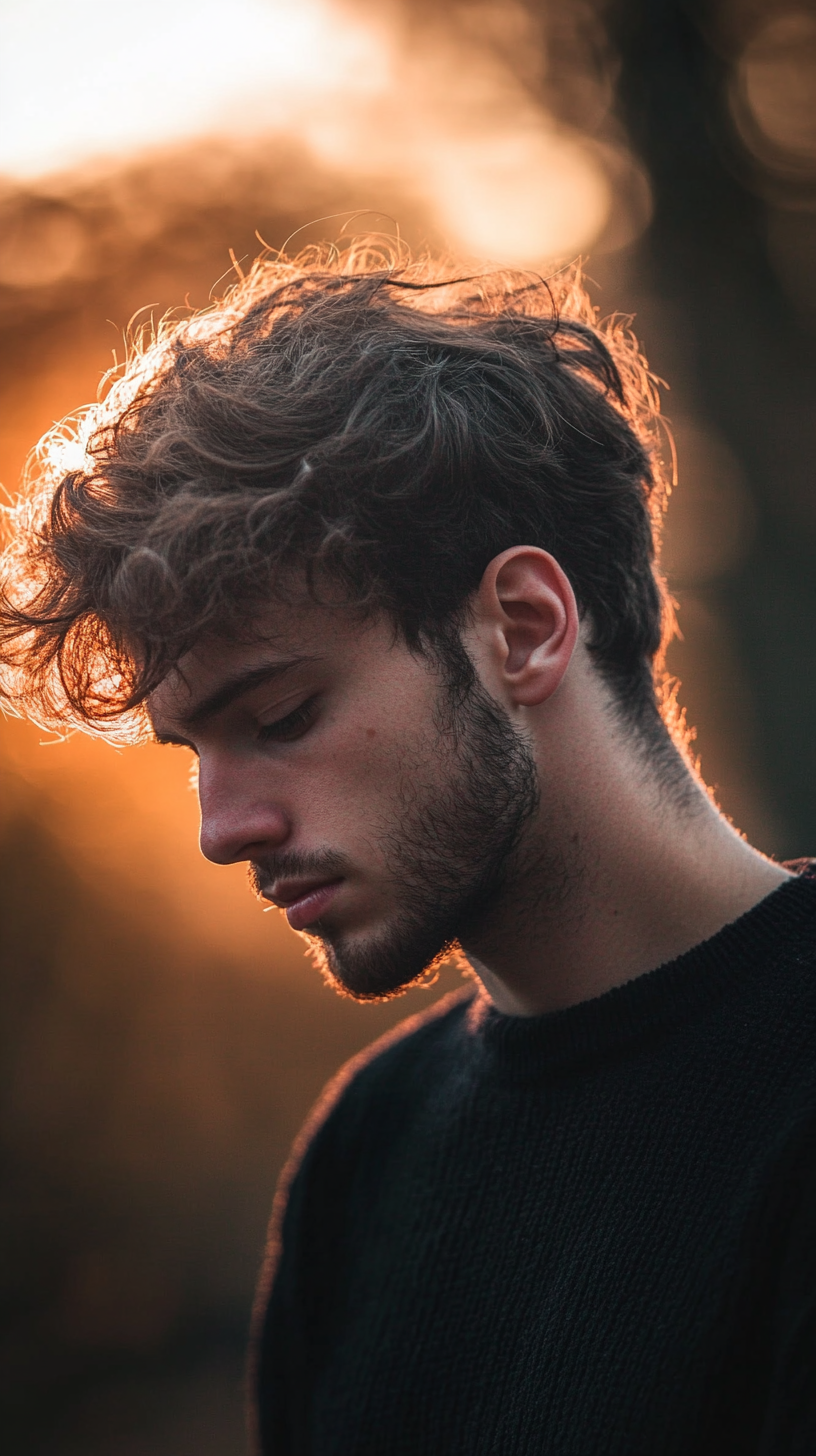
Apenas para fins ilustrativos. | Fonte: Midjourney
Ele fez uma pausa antes de acrescentar: “Engraçado… estou saindo com alguém que trabalha aqui. Mundo pequeno, né?”
Um frio estranho percorreu meu corpo. Meus punhos se fecharam antes mesmo que eu percebesse. “Muito pequeno mesmo”, murmurei.
“Eu deveria deixar você ir”, ele disse, sentindo minha tensão.
“É”, assenti rapidamente, já me encaminhando para a porta. “Conversamos outra hora.”
Ao entrar no prédio, meus pensamentos estavam a mil — e não apenas sobre Jacob.
Algo não estava certo. E eu tinha a sensação crescente de que as coisas estavam prestes a ficar ainda mais complicadas.
Dentro da escola, os corredores pareciam estranhamente silenciosos, como se o ar estivesse prendendo a respiração.

Apenas para fins ilustrativos. | Fonte: Midjourney
A tagarelice habitual das crianças e o zumbido da atividade desapareceram, substituídos pelo silêncio e pelo leve rangido dos meus sapatos no chão limpo e polido. O cheiro de desinfetante persistia, forte e frio.
Ao me aproximar da sala do diretor, minha mente acelerou. O que Jacob tinha feito? O que poderia ser tão sério que eu tivesse que ir imediatamente?
Assim que estendi a mão para a maçaneta, uma voz baixa surgiu atrás de mim.
“Sra. Bennett?”
Virei-me, assustado. Era o zelador, um homem de meia-idade com olhos gentis e um esfregão encostado na parede ao lado. Ele olhou ao redor, nervoso, antes de se aproximar.

Apenas para fins ilustrativos. | Fonte: Midjourney
“Eu provavelmente não deveria dizer isso”, sussurrou ele, “mas… eles estão mentindo para você. Seu filho não fez nada de errado. A professora — a Sra. Emily — armou para ele.”
Fiquei sem fôlego. “O quê? Por quê? Do que você está falando?”
Mas antes que eu pudesse perguntar mais, a porta do escritório rangeu ao abrir.
“Sra. Bennett”, disse a diretora com firmeza, parada na porta. “Entre, por favor.”
Lá dentro, a sala estava tensa. Jacob estava sentado em uma cadeira de plástico duro, com as pernas balançando nervosamente.
O rosto dele estava pálido, os lábios comprimidos numa linha fina. A Sra. Emily estava sentada ao lado dele, com as mãos cuidadosamente cruzadas, o rosto ilegível.
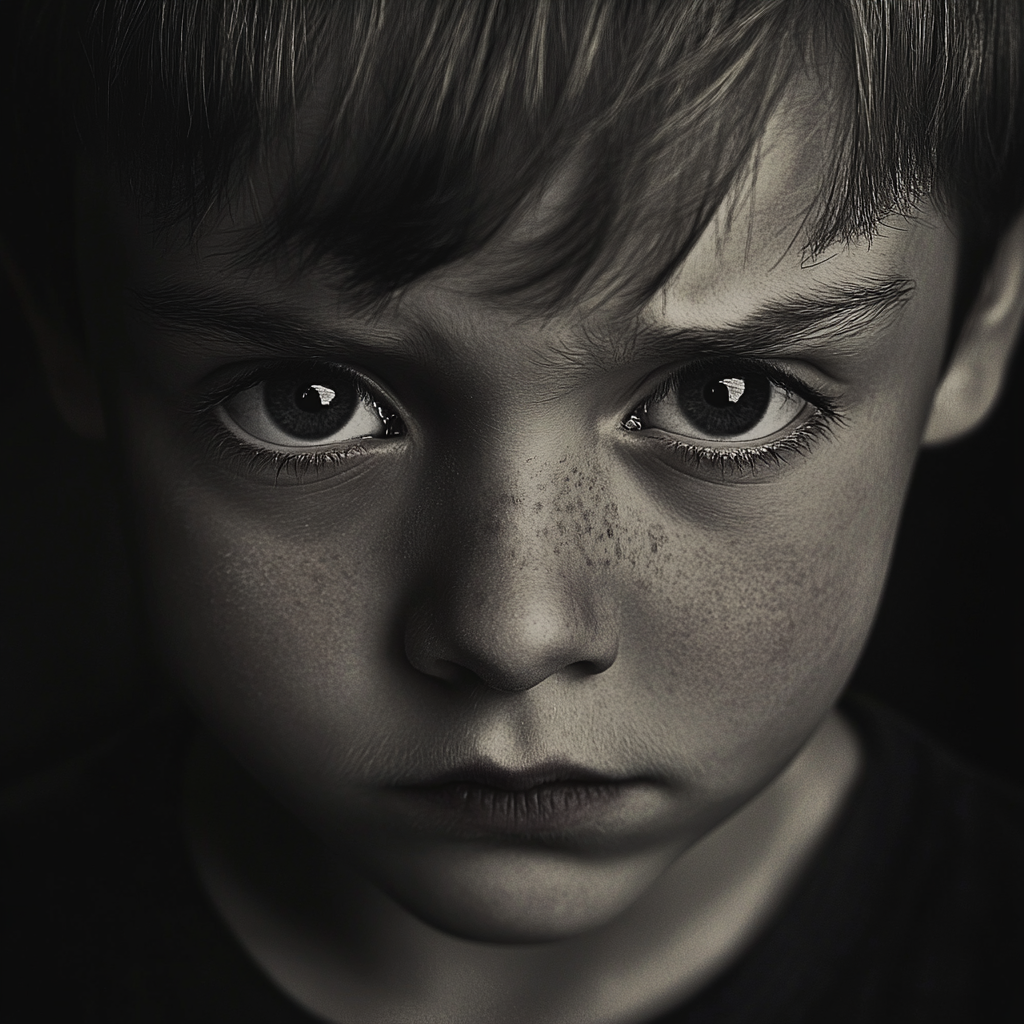
Apenas para fins ilustrativos. | Fonte: Midjourney
O diretor não perdeu tempo.
“Seu filho falsificou as notas dos testes”, ele disse bruscamente.
Ele mudou as respostas para dar a impressão de que tinha uma pontuação maior. Esse tipo de desonestidade, especialmente depois de recentes problemas de comportamento, não pode ser ignorado. Estamos considerando a suspensão, possivelmente a remoção.
“O quê?”, ofeguei. “Não. Jacob não faria isso. Você deve estar enganado.”
A Sra. Emily finalmente falou, calma e fria: “Só o teste do Jacob foi alterado. A letra corresponde à dele.”
Antes que eu pudesse falar, Jacob explodiu, com os olhos arregalados de pânico: “Mãe, ela me mandou fazer! Ela me deu o lápis e me mandou consertar!”
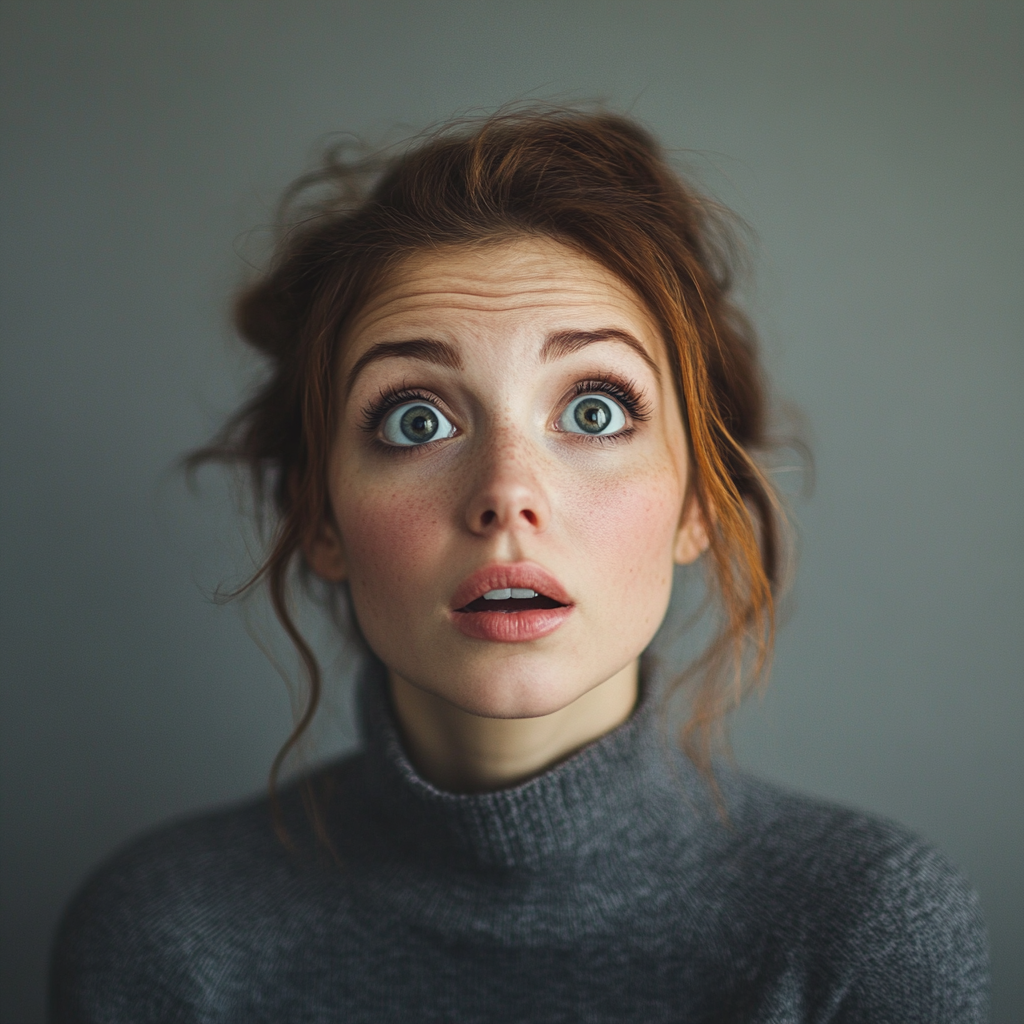
Apenas para fins ilustrativos. | Fonte: Midjourney
“Quieto, Jacob!”, retrucou a Sra. Emily.
Virei-me bruscamente. “Não fale assim com o meu filho.”
A porta se abriu novamente. Mark entrou, visivelmente confuso. “Desculpe interromper… Emily?”
A postura de Emily ficou rígida.
“O que está acontecendo?” ele perguntou, olhando entre Jacob e o professor.
E assim, cada peça do quebra-cabeça se encaixou.
Emily. A professora. A mulher com quem ele estava namorando.

Apenas para fins ilustrativos. | Fonte: Midjourney
Meu coração disparou quando percebi. Não se tratava mais apenas da escola. Era pessoal. Muito pessoal.
Respirei fundo e fiquei de pé, olhando o diretor diretamente nos olhos. Minha voz permaneceu calma, mas meu coração batia forte.
“Deixe-me esclarecer o que realmente está acontecendo. A Sra. Emily está namorando meu ex-marido. E eu acredito que ela está tentando expulsar meu filho desta escola por causa disso.”
A sala ficou completamente silenciosa.
Mark virou a cabeça bruscamente para Emily e ergueu as sobrancelhas em descrença. “Emily… isso é verdade?”

Apenas para fins ilustrativos. | Fonte: Midjourney
Os olhos de Emily se moveram rapidamente de um para o outro. Por um instante, ela pareceu que ia negar. Mas então seu rosto ficou vermelho e seu maxilar se contraiu.
“Tudo bem”, ela disparou, cruzando os braços. “Sim, eu reconheci Jacob imediatamente. Eu sabia exatamente quem ele era. Susan, você não pode simplesmente aparecer e tirar o Mark de mim.”
Sua voz falhou no final, tremendo entre frustração e desespero.
Mark recuou como se ela o tivesse golpeado. “Me aceitar de volta? Emily, eu nunca fui sua para me aceitar, para começo de conversa. E como ousa arrastar meu filho para isso? Ele é uma criança.”
Emily olhou para baixo, o rosto subitamente pálido. Ela não disse nada.

Apenas para fins ilustrativos. | Fonte: Midjourney
O diretor pigarreou e levantou-se lentamente da mesa, com a voz grave e controlada. “Sra. Emily, este é um comportamento completamente inapropriado, tanto pessoal quanto profissionalmente. Você está demitida do seu cargo. Com efeito imediato.”
Soltei um suspiro trêmulo, em parte descrença, em parte alívio.
O diretor se virou para mim com uma expressão mais suave.
“Sra. Bennett, peço profundas desculpas. Jacob permanecerá aqui. Nós o apoiaremos de todas as maneiras que pudermos.”
Assenti, agradecida, mas minha atenção já estava voltada para Jacob. Ajoelhei-me ao lado da cadeira dele e o abracei com força.
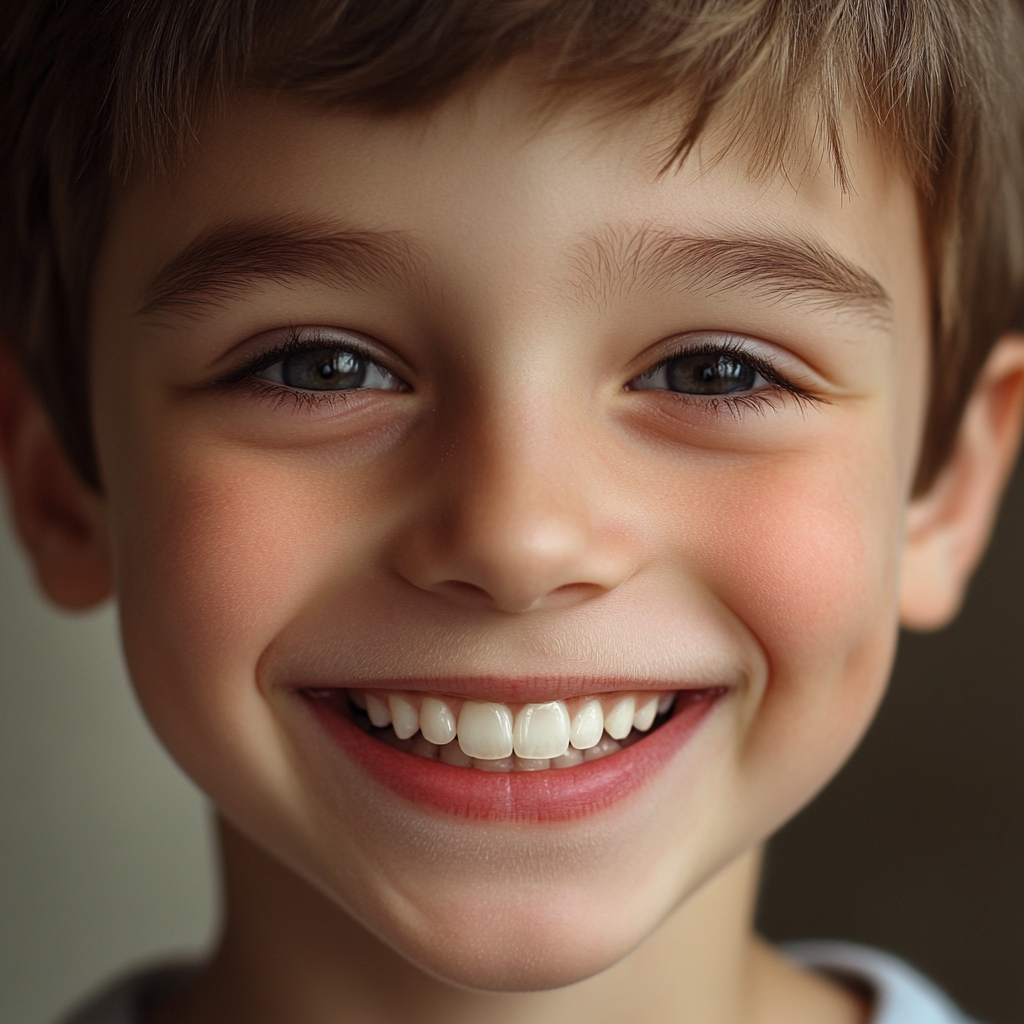
Apenas para fins ilustrativos. | Fonte: Midjourney
Ele se agarrou a mim, apertando-me com força com seus bracinhos.
“Sinto muito, querido”, sussurrei em seu cabelo, lutando contra as lágrimas. “Prometo que, de agora em diante, sempre acreditarei em você.”
Ele fungou e sussurrou de volta: “Está tudo bem, mãe. Estou feliz que você saiba a verdade agora.”
Ficamos juntos, de mãos dadas, e nos viramos para sair do escritório. Quando chegamos à porta, Mark se aproximou de nós e colocou a mão gentilmente no meu braço.

Apenas para fins ilustrativos. | Fonte: Midjourney
“Susan”, disse ele baixinho, “sinto muito mesmo. Eu não sabia o que ela estava fazendo.”
Assenti, cansado, mas sincero. “Talvez um dia todos nós descubramos isso. Pelo bem de Jacob.”
Lá fora, o sol estava quente e brilhante. Jacob apertou minha mão com mais força, e eu retribuí.
Caminhamos juntos até o carro, ambos em silêncio, mas firmes. De alguma forma, depois de tudo, eu sabia que ficaríamos bem.
Conte-nos o que você achou desta história e compartilhe com seus amigos. Isso pode inspirá-los e alegrar o dia deles.



Leave a Reply